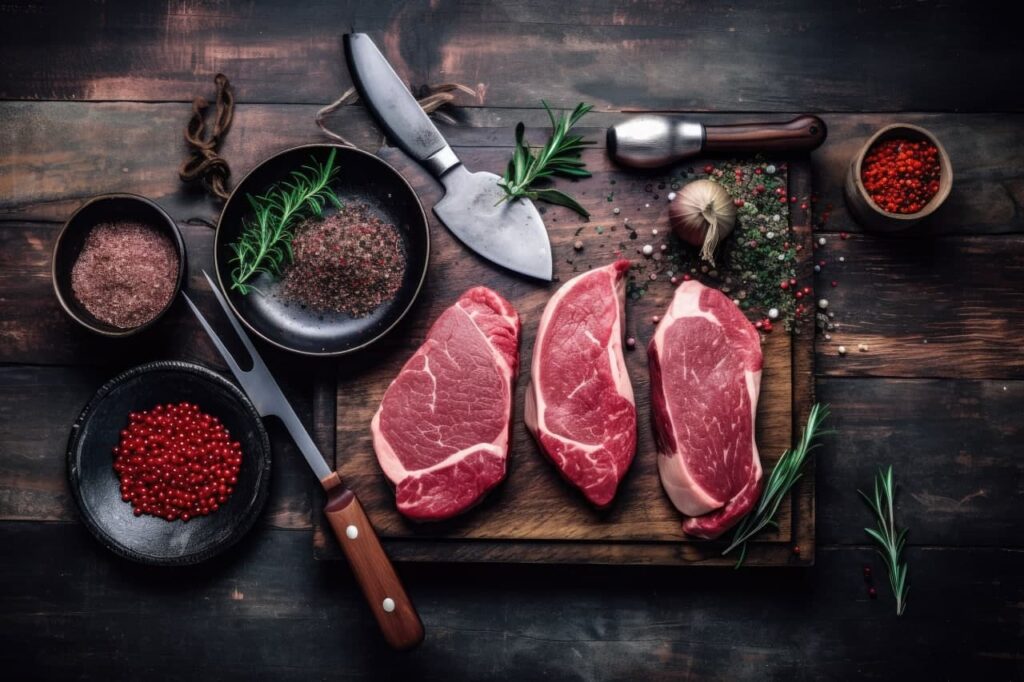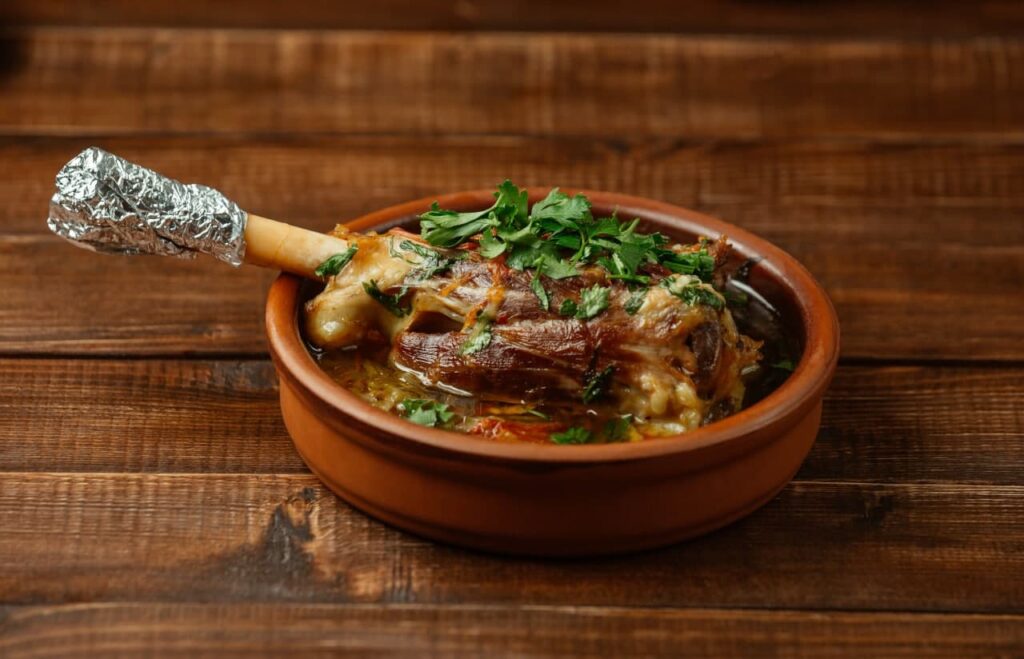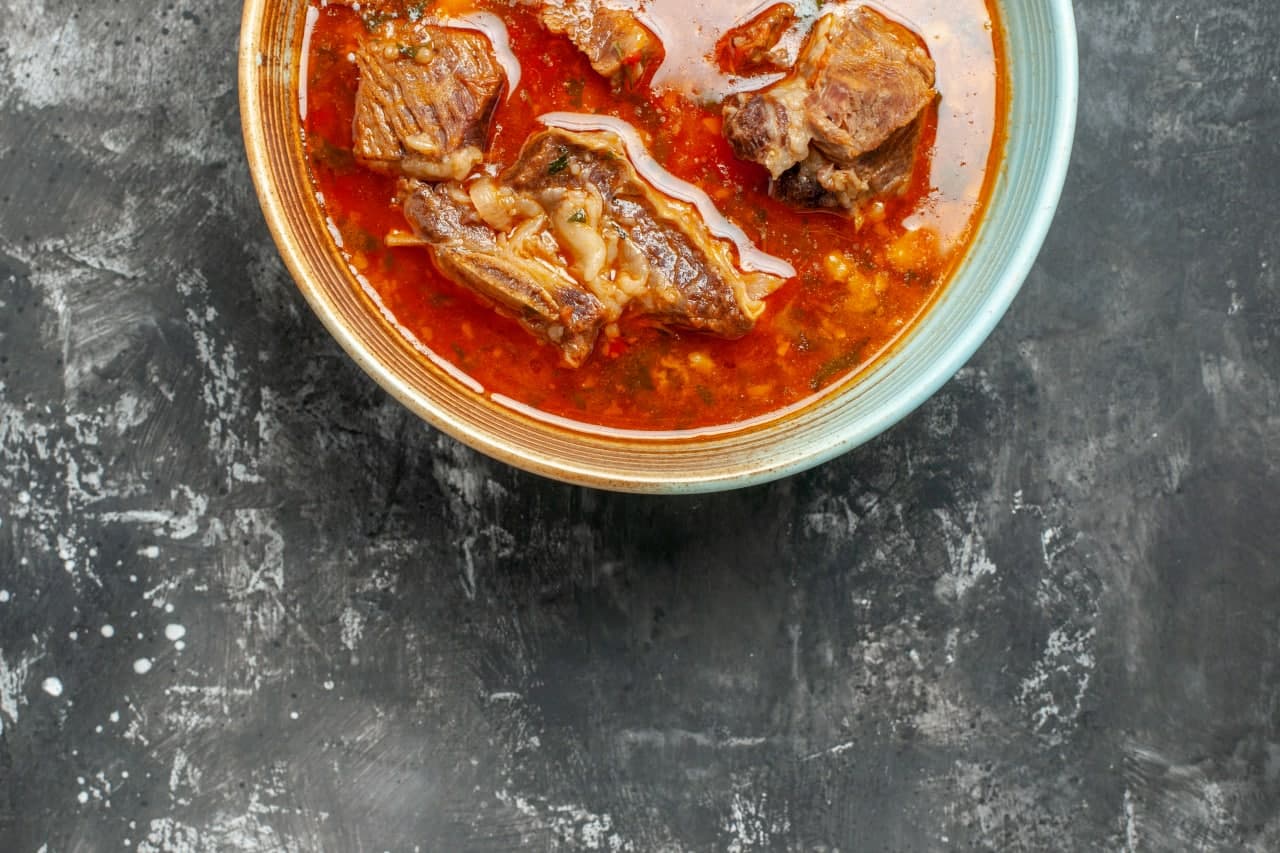In the world of culinary delights, there are few dishes as aromatic and flavorful as Nihari. This exquisite delicacy has captured the hearts and taste buds of food enthusiasts worldwide. In this article, we will delve into the origins, ingredients, preparation, and the sheer delight of indulging in Nihari. Prepare to embark on a journey of taste and tradition!
The Origins of Nihari
Nihari, whose name is derived from the Arabic word “Nahar,” meaning “morning,” has a history as rich as its taste. Its origins can be traced back to the Mughal era in India, where it was initially enjoyed as a royal breakfast dish. Over time, Nihari transcended its regal beginnings and became a beloved part of Indian and Pakistani cuisine.

Unveiling the Key Ingredients
The heart and soul of Nihari lie in its carefully selected ingredients. Traditionally, it consists of slow-cooked meat, often beef or mutton, simmered to perfection in a flavorful broth. The secret to Nihari’s exceptional taste lies in the harmonious blend of spices, including cloves, cardamom, cinnamon, and black pepper, which infuse the dish with a unique aroma and flavor.
The Art of Preparation
Preparing Nihari is an art form that requires patience and attention to detail. The meat is simmered for hours on low heat, allowing it to absorb the essence of the spices and tenderize to perfection. Wheat flour or gram flour is used as a thickening agent, giving Nihari its signature consistency. The dish is traditionally cooked overnight, allowing the flavors to meld and intensify.
Nihari Variations
Nihari has evolved over time, giving rise to various regional variations. Each region adds its own twist to the classic recipe. For instance, Delhi Nihari is known for its generous use of ghee, while Karachi Nihari boasts a spicier kick. Vegetarian versions, using ingredients like jackfruit or mushrooms, have also gained popularity among those who prefer plant-based options.
Savoring the Nihari Experience
When it comes to relishing Nihari, it’s not just about the taste; it’s an experience in itself. The dish is typically served piping hot, garnished with fresh coriander, green chilies, and slices of lemon. Accompanied by naan bread or steamed rice, Nihari is a gastronomic journey that tantalizes the senses.
Nihari: More Than a Dish
Nihari transcends being just a meal; it’s a cultural phenomenon. It brings families and friends together, creating cherished moments around the dining table. Whether enjoyed during festive occasions or as a comfort food on a lazy weekend morning, Nihari holds a special place in the hearts of many.
Health Benefits of Nihari
Beyond its delicious taste and cultural significance, Nihari offers some surprising health benefits. The slow cooking process breaks down collagen in the meat, making it easier to digest. Additionally, the aromatic spices in Nihari, such as cloves and cinnamon, have antioxidant properties that can contribute to overall well-being.
Finding Nihari Near You
The popularity of Nihari has led to its availability in restaurants around the world. If you’re eager to savor this culinary masterpiece, you won’t have to travel far. Many eateries, particularly in areas with a significant South Asian population, offer Nihari on their menus. Be sure to check local reviews to find the best Nihari joint in your area.
The Nihari Fest: Celebrate Flavor in Every Bite
In conclusion, Nihari is not just a dish; it’s a celebration of flavor, culture, and tradition. Whether you’re a seasoned Nihari enthusiast or a curious foodie looking to explore new tastes, this delectable dish promises to take you on a journey of taste like no other. So, why wait? Embark on your Nihari adventure today and savor the rich, aromatic flavors that have stood the test of time.
Incorporate Nihari into your culinary repertoire and experience the magic of this timeless delight. As you take that first bite, you’ll understand why Nihari is not just a meal; it’s a celebration of life’s exquisite flavors.
Recipe
Here is a recipe for Nihari
Ingredients
| 500g beef or mutton, cut into pieces | 1 teaspoon red chili powder (adjust to your spice preference) |
| 2 onions, finely sliced | 1 teaspoon garam masala |
| 4 cloves of garlic, minced | 1 cinnamon stick |
| 2-inch piece of ginger, minced | 4-5 green cardamom pods |
| 2 tablespoons vegetable oil | 4-5 cloves |
| 2 tablespoons ghee (clarified butter) | Fresh coriander leaves, green chilies, and lemon slices for garnish |
| 2 teaspoons cumin seeds | 2 tablespoons wheat flour or gram flour |
| 2 teaspoons coriander powder | Naan bread or steamed rice for serving |
| 1 teaspoon turmeric powder | Salt to taste |

Instructions:
Heat the vegetable oil and ghee in a large, heavy-bottomed pot or a pressure cooker.
Add the sliced onions and cook them on medium heat until they turn golden brown. This may take about 10-15 minutes.
Add the minced garlic and ginger to the browned onions and sauté for another 2-3 minutes until the raw smell disappears.
Add the cumin seeds, coriander powder, turmeric powder, red chili powder, and salt to the pot. Stir well and cook to roast the spices.
Add the meat pieces to the pot and sear them until they turn brown on all sides. This adds depth of flavor to the Nihari.
Now Add enough water so that water covers the meat and boil it. Once it’s boiling, reduce the heat to low, cover the pot, and let the meat simmer for 2-3 hours. If you’re using a pressure cooker, cook for about 30-40 minutes or until the meat is tender.
While the meat is simmering, dry roast the wheat flour or gram flour in a separate pan until it turns a shade darker but not burnt. This will be used as a thickening agent.
Once the meat is tender, add the roasted flour to the pot and mix it in thoroughly. Allow the Nihari to simmer for an additional 15-20 minutes until it reaches the desired consistency. It should be thick and aromatic.
In a separate pan, heat the ghee and add the cinnamon stick, cardamom pods, and cloves. Let them sizzle for a minute or two, releasing their flavors.
Pour the ghee and spice mixture over the Nihari and stir well. Add garam masala and adjust the salt and spice levels to your taste.
Serve the Nihari hot, garnished with fresh coriander leaves, green chilies, and lemon slices. It pairs perfectly with naan bread or steamed rice.
Enjoy your homemade Nihari, a flavorful and aromatic delight!

